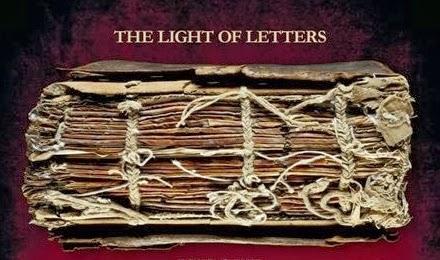Zdravka Mihaylova
For GRReporter exclusive
Traditionally, on the eve of the Day of Slavonic Alphabet and Culture 24 May, GRReporter introduces you to the views of different scholars on the great cultural heritage of Thessaloniki brothers Cyril and Methodius. Last year we published an interview with Ph.D. Vasya Velinova, director of the Centre for Slavic and Byzantine Studies "Ivan Dujčev." Today we offer you the opinion of Ph.D. Panagiotis Kambanis, an archaeologist at the Museum of Byzantine Culture in Thessaloniki who talked with Zdravka Mihaylova.
 Panagiotis Kambanis graduated in archaeology at the Philosophy Faculty of Belgrade University. He has been working as an archaeologist at the Museum of Byzantine Culture in Thessaloniki for twenty-five years. He has defended a thesis on "The amulets in late antiquity, their preservation and transformation by the Christian community" at the University of Thessaly in Volos. He speaks Serbian, Croatian, English, and has good command of Russian and Bulgarian.
Panagiotis Kambanis graduated in archaeology at the Philosophy Faculty of Belgrade University. He has been working as an archaeologist at the Museum of Byzantine Culture in Thessaloniki for twenty-five years. He has defended a thesis on "The amulets in late antiquity, their preservation and transformation by the Christian community" at the University of Thessaly in Volos. He speaks Serbian, Croatian, English, and has good command of Russian and Bulgarian.
In early 2014, within the context of the celebrations to mark twenty years since the Byzantine Museum first opened its doors to the audience of Thessaloniki with the exhibition "Light comes from Thessaloniki" the city was honoured as the birthplace of Cyril and Methodius. The presentation of the catalogue that accompanied the exhibition and that was published under your scientific editing took place on 30 March this year. What are the main highlights in the exhibition reflected in it?
The exhibition, which was primarily photographic, presented the events in the Middle Byzantine Period (8th-12th century), the contribution of Thessaloniki - the birthplace of Cyril and Methodius where they spent their formative years as individuals, the spiritual and cultural foundation of Constantinople - the "navel of the world" at the time, the diplomatic, missionary and civilizing activity of the two Apostles among the Slavs in today's Central Europe as well as their contribution to the creation of the Glagolitic alphabet with the help of which they managed to convey to the Slavs the whole poetic universe of the Byzantine liturgical texts, the excerpts from the Gospels and the Acts of the Apostles, the canonical and legal texts, and of the discourses of the great Fathers of the Church. The creation of the Cyrillic alphabet by their disciples and the subsequent gradual "Byzantization" and "Christianization" of the Slavs had a special place, as might be expected.
Carefully selected archaeological material enriched the exhibition. The remnants of antiquity took us on  a journey in a multidimensional space, presenting us with the opportunity to have the vision and experience of a bit of the daily life of the people of the past. The archaeological finds that were an impressive and diverse collection of exhibits from Thessaloniki and its wider region in the Middle Byzantine Period aimed to highlight, as far as possible, the atmosphere of the era through the impressiveness they express and to turn reflection on Time into an act unlocking reconsideration of human values.
a journey in a multidimensional space, presenting us with the opportunity to have the vision and experience of a bit of the daily life of the people of the past. The archaeological finds that were an impressive and diverse collection of exhibits from Thessaloniki and its wider region in the Middle Byzantine Period aimed to highlight, as far as possible, the atmosphere of the era through the impressiveness they express and to turn reflection on Time into an act unlocking reconsideration of human values.
Nowadays, when almost all of us live in a labyrinthine reality, the need to connect the culture that we have inherited with our own lives, to transfer bridges between "...past, present and posterity..." as English poet and Nobel Prize winner William Butler Yeats wrote in 1927 in his work "Sailing to Byzantium" is becoming more pressing.
The ninth century when Cyril and Methodius lived and carried out their activities is a divide for both the East and the West.
The trouble in terms of history is that while the past really happened, what has been preserved is nothing more than notes that people were taking. Usually these are the winners because wars play a crucial role throughout history and those who have not died in them write memoirs and chronicles.
Four major events should concern us at the exhibition and the congress, and in the catalogue. The first is the crisis of the Iconoclast period that altered the relationship between the church and the state.
The other three events are the three schisms between the West and the East, namely the religious schism that is the most famous, the geographic schism when the Slavs conquered Central European territories and in fact divided the empire into two, and, especially, the politica schism, when Charlemagne was crowned Emperor of the Western Roman Empire. The former single head eagle, the symbol of the Roman Empire, became two-headed, thus representing the eastern part of the Empire, which gradually began to form as Byzantium.

Every time the lights of an exhibition turn off, the only thing left is the catalogue. It will preserve its message after its end. Like any other exhibition, "Ex Thessalonika Lux" had a four-dimensional goal. The "product" that an institution like the Museum of Byzantine Culture produces should be primarily cultural but also with an educational and touristic value, and have "diplomatic" dimensions too in some way. All those who contributed to its occurrence, we believe that together with the parallel events the exhibition achieved its goals.